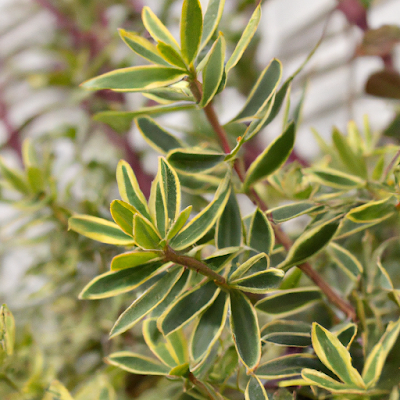Rice Paddy Herb, Limnophila aromatica
What are the health benefits of consuming Rice Paddy Herb, Limnophila aromatica?
Consuming Rice Paddy Herb, also known as Limnophila aromatica, can offer several health benefits. Here are some of the key advantages:
1. Nutritional Value:
Rice Paddy Herb is rich in essential nutrients like vitamins A, C, and E, as well as minerals such as calcium, iron, and potassium. These nutrients contribute to overall health and well-being.
2. Anti-inflammatory Properties:
Studies have shown that Rice Paddy Herb contains compounds with anti-inflammatory properties. Regular consumption may help reduce inflammation in the body, which is associated with various chronic diseases.
3. Digestive Health:
This herb has been traditionally used to improve digestion and alleviate gastrointestinal issues such as bloating and indigestion. It can help stimulate the production of digestive enzymes and facilitate smoother digestion.
4. Antioxidant Power:
Rice Paddy Herb is a great source of antioxidants, which play a vital role in neutralizing harmful free radicals in the body. Antioxidants protect cells from damage and may help prevent certain diseases like cancer and heart disease.
5. Immune System Support:
The presence of vitamins and minerals in Rice Paddy Herb can contribute to a healthy immune system. A strong immune system is essential for fighting off illnesses and infections.
6. Stress Relief:
Some studies suggest that consuming Rice Paddy Herb may have a calming effect on the nervous system, helping to reduce stress levels and promote relaxation.
7. Respiratory Health:
In traditional medicine, this herb has been used to alleviate respiratory conditions such as coughs, asthma, and bronchitis. It has expectorant properties that can help loosen phlegm and clear congestion.
It's important to note that while Rice Paddy Herb offers potential health benefits, individual results may vary. As with any dietary change or supplement, it's always best to consult with a healthcare professional before incorporating it into your routine.
What is the nutritional profile of Rice Paddy Herb?
Rice Paddy Herb, also known as Limnophila aromatica, is a flavorful herb commonly used in Southeast Asian cuisine. While it is not as well-known as some other herbs, it does offer a range of nutritional benefits. Here is the nutritional profile of Rice Paddy Herb:
1. Vitamins:
Rice Paddy Herb is a good source of vitamins, particularly vitamin A and vitamin C. Vitamin A is essential for maintaining healthy vision, skin, and immune function, while vitamin C is known for its antioxidant properties and its role in supporting the immune system.
2. Minerals:
This herb contains important minerals such as calcium, iron, and potassium. Calcium is crucial for maintaining strong bones and teeth, while iron plays a vital role in the formation of red blood cells and transportation of oxygen throughout the body. Potassium is necessary for regulating blood pressure and supporting heart health.
3. Antioxidants:
Rice Paddy Herb contains various antioxidants that help protect the body against oxidative stress caused by free radicals. These antioxidants help to reduce inflammation and may have potential health benefits.
4. Essential Oils:
This herb also contains essential oils that give it its distinct aroma and flavor. These oils may have antimicrobial properties and contribute to the overall health benefits of Rice Paddy Herb.
It's important to note that the exact nutritional composition of Rice Paddy Herb may vary depending on factors such as growing conditions and preparation methods. However, including this herb in your diet can be a flavorful way to add some nutritional value to your meals.
What are some traditional dishes that feature Rice Paddy Herb as a key ingredient?
Rice Paddy Herb, also known as Vietnamese coriander or ngo om, is a popular herb used in various traditional dishes. Here are a few dishes where Rice Paddy Herb plays a key role:
Photo is "Canh Chua" by Jason Hutchens is licensed under CC BY 2.0.
1. Canh Chua:
A vibrant and tangy Vietnamese sour soup that typically includes fish, pineapple, tomatoes, and Rice Paddy Herb. The herb adds a refreshing citrus-like flavor to balance the sourness of the soup.
Photo is "Co Do's Bun Bo Hue" by thatwelike is licensed under CC BY 2.0.
2. Bun Bo Hue:
A flavorful Vietnamese noodle soup originating from the city of Hue. This dish features Rice Paddy Herb as a garnish, bringing an aromatic and slightly spicy element to complement the rich beef broth.
3. Goi Ngo Sen:
A refreshing lotus stem salad commonly found in Vietnamese cuisine. Along with other herbs and vegetables, Rice Paddy Herb is added to bring a unique flavor profile to this crunchy and zesty salad.
Photo is "Bun Cha Ca" by Kaeru is licensed under CC BY 2.0.
4. Cha Ca:
A famous Hanoi-style dish consisting of grilled fish marinated in turmeric and served with vermicelli noodles, peanuts, herbs, and Rice Paddy Herb. The herb contributes to the overall fragrance and freshness of the dish.
Photo is "Banh Xeo: Vietnamese Pan Cake" by squidish is licensed under CC BY 2.0.
5. Banh Xeo:
A savory Vietnamese pancake filled with various ingredients such as pork, shrimp, bean sprouts, and Rice Paddy Herb. This herb adds a distinct herbal note to the filling, enhancing the overall taste.
These are just a few examples of how Rice Paddy Herb is incorporated into traditional dishes. Its unique flavor and aroma make it a beloved ingredient in Vietnamese cuisine, adding depth and complexity to various recipes.







Comments
Post a Comment